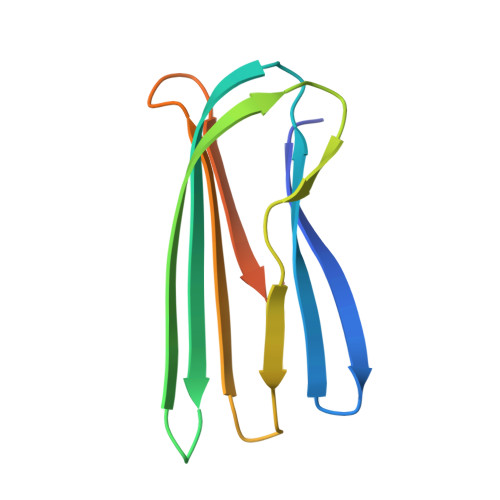Atomic Resolution Insights Into Curli Fiber Biogenesis.
Taylor, J.D., Zhou, Y., Salgado, P.S., Patwardhan, A., Mcguffie, M., Pape, T., Grabe, G., Ashman, E., Constable, S.C., Simpson, P.J., Lee, W.C., Cota, E., Chapman, M.R., Matthews, S.J.(2011) Structure 19: 1307
- PubMed: 21893289
- DOI: https://doi.org/10.1016/j.str.2011.05.015
- Primary Citation of Related Structures:
2Y2T, 2Y2Y - PubMed Abstract:
Bacteria produce functional amyloid fibers called curli in a controlled, noncytotoxic manner. These extracellular fimbriae enable biofilm formation and promote pathogenicity. Understanding curli biogenesis is important for appreciating microbial lifestyles and will offer clues as to how disease-associated human amyloid formation might be ameliorated. Proteins encoded by the curli specific genes (csgA-G) are required for curli production. We have determined the structure of CsgC and derived the first structural model of the outer-membrane subunit translocator CsgG. Unexpectedly, CsgC is related to the N-terminal domain of DsbD, both in structure and oxido-reductase capability. Furthermore, we show that CsgG belongs to the nascent class of helical outer-membrane macromolecular exporters. A cysteine in a CsgG transmembrane helix is a potential target of CsgC, and mutation of this residue influences curli assembly. Our study provides the first high-resolution structural insights into curli biogenesis.
- Division of Molecular Biosciences, Faculty of Natural Sciences, Imperial College London, London, SW7 2AZ, UK.
Organizational Affiliation:
















